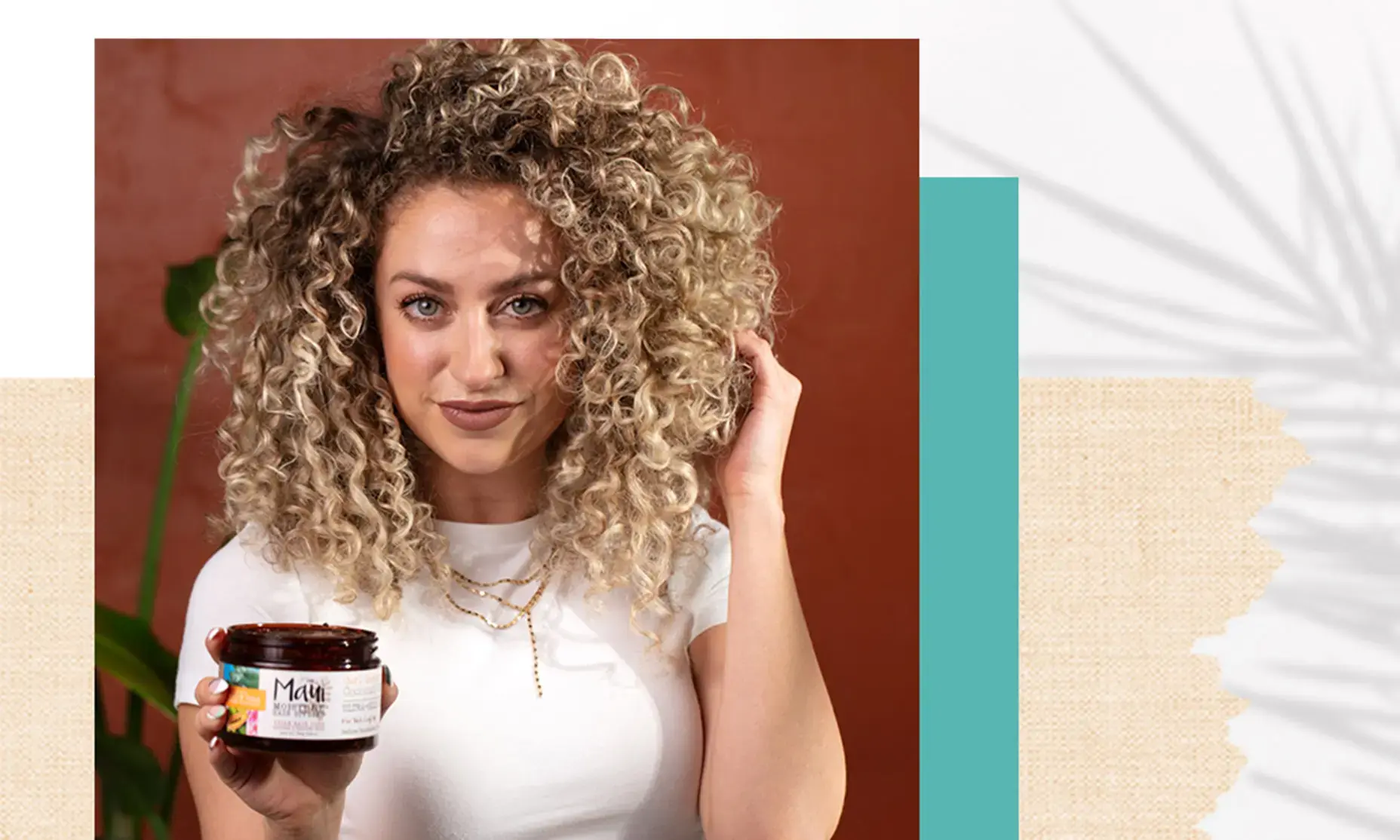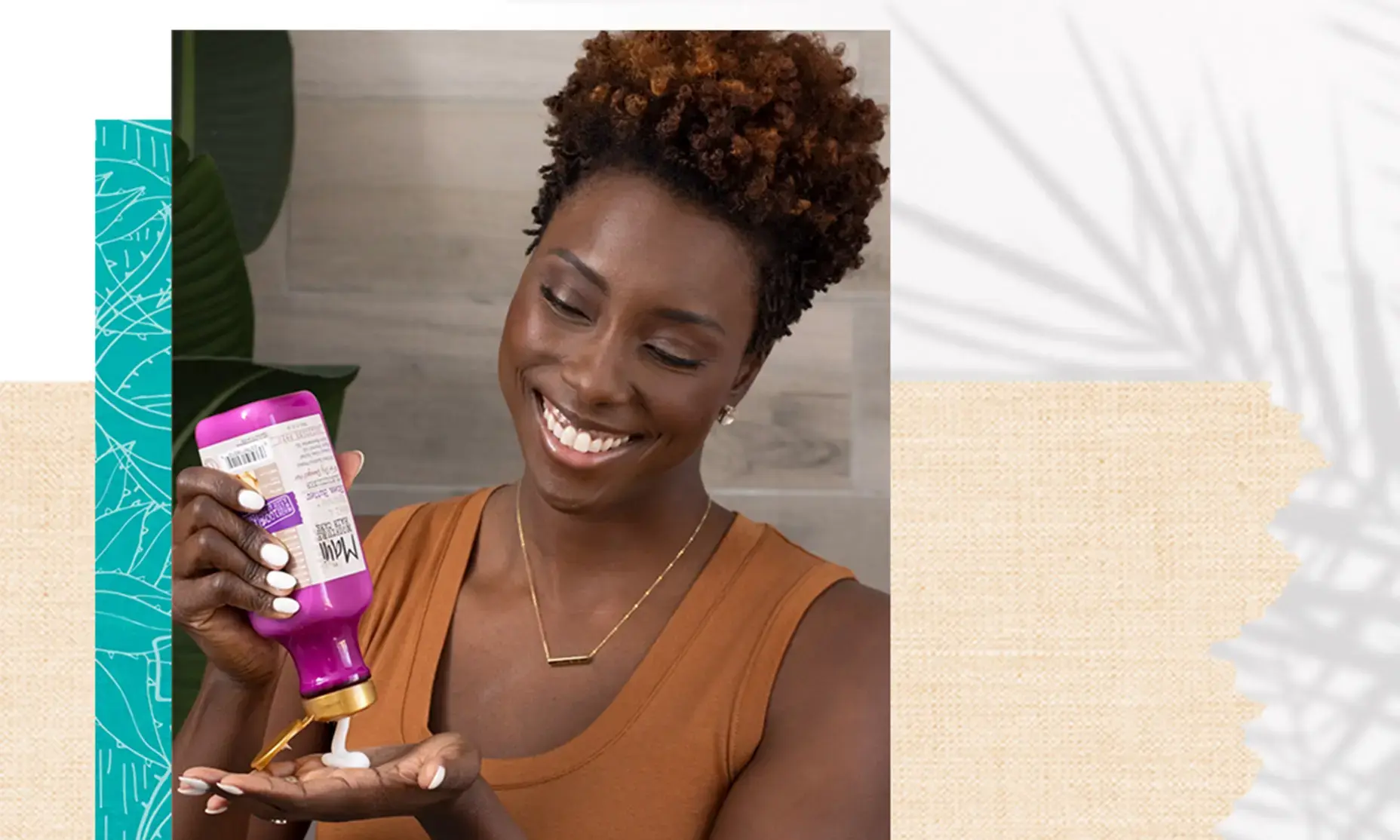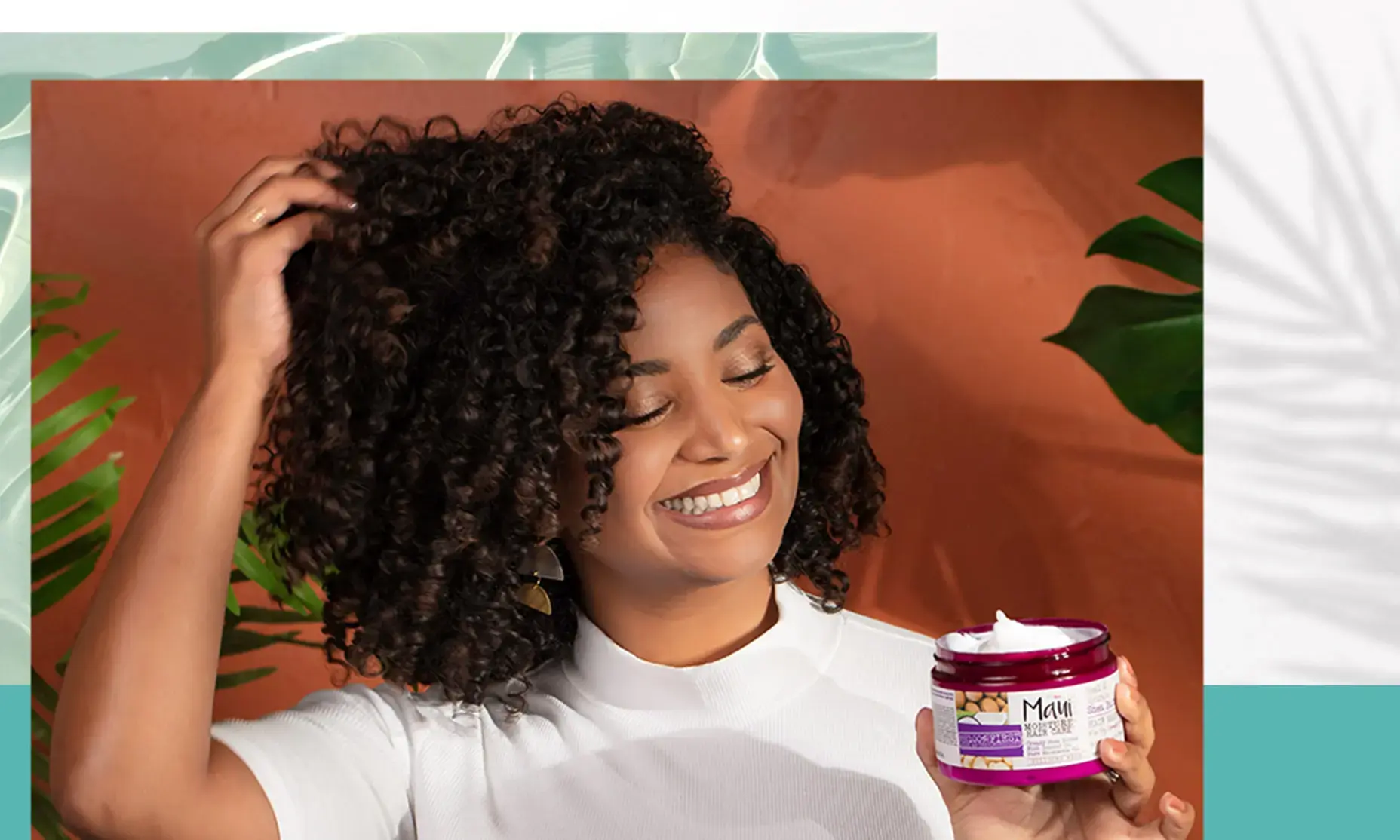Your beautiful curls can be defined and classified in many ways – fine to thick, wavy to coily, low to high porosity – but there’s one system that breaks down your curl type even further. Learn your curl type and how to best care for it to unlock your healthiest, bounciest, most “you” natural texture yet.
THE OVERARCHING TYPES
There are four “types” of hair texture, which are broken down into Type 1 (straight), Type 2 (wavy), Type 3 (curly) and Type 4 (coily). Easy enough! But within each of these types, there are three subsets – A, B and C. These subsets are determined by the diameter of your curls, with A as widest curl and C as the tightest. 3 types, 3 subsets, that’s a lot of combos – time to dig into them all.
TYPE 2: WAVY
When you think of Type 2 curls, think classic “beach hair”. With a definitive S pattern, the hair lies closer to the scalp and tends to prefer lightweight products.
2A
If you have 2A waves, you might have straightened your hair your whole life because you didn’t know you had wavy hair. 2A curls are loose waves that can be easily straightened and have a large diameter. Since this type is typically made up of fine strands and lacks volume at the root, lightweight products will help define your waves without weighing them down. Light curl creams and sprays like our Flaxseed Curl Defining Mist and mousse (like our Nourish & Moisture Coconut Milk Mousse) will be your best option rather than gels.
2B
Similar to 2A, this is wavy hair with more defined S waves that start about midway down your hair. The diameter is smaller and tighter, making it more difficult to straighten than a 2A. But why would you? This curl type should also stick to lightweight products that focus on definition and hold like our Flaxseed collection. Too much moisture and your waves will fall!
2C
This type is made up of thick waves with well-defined S waves that start at the roots. Smaller in diameter, these almost look like curls – but they’re not fully-formed ringlets. 2C waves are sensitive to frizz and can easily get dehydrated, so make sure you use hydrating products and that you’re not over-washing. Like all Type 2 curls, lightweight products are your friend – try leave-in conditioners, lightweight curl creams, light gels and mousse
TYPE 3: CURLY
From loose loops to tight, springy ringlets, Type 3 encompasses a wide range of curls. This type is highly likely to experience frizz, so make sure you’re using hydrating and defining products.
3A
These large, loose curls can almost look like waves, but they have a defined loop and curl that’s more than an S wave. The diameter of this type is about the size of sidewalk chalk. As all Type 3 curls are, 3As are highly prone to frizz, so make sure you’re not touching your hair too much after you style it. And like always, hydrate, hydrate, hydrate! This curl type can handle heavier moisture than Type 2s, but don’t overdo it – try light and medium weight products to see what works best for you.
3B
With a springier, more ringlet-like appearance, Type 3B curls have a diameter about the size of a marker. While frizz is always a concern with Type 3 curls, 3B curls are even more prone to the dryness that leads to frizz and breakage. When you’re searching for products, look for medium to high moisture, such as our Curl Quench + Coconut Oil collection, and humectants like aloe or flaxseed to seal in the hydration. Gels will get along well with your curls, as they form a seal around your other styling products and lock in your curl pattern.
3C
The smallest of the Type 3 curls, 3Cs are tight corkscrew ringlets with around the same diameter as a pencil. This type has the most volume of the 3s because the curls are densely packed together – which can make 3C curls more prone to shrinkage. To prevent frizz, layer your styling products and include medium to heavy moisture in your routine.
TYPE 4: COILY
The unique Type 4 curl is your coily, kinky, zig-zag type of texture. Each of these types is naturally dry and experiences major shrinkage, so explore heavy moisture products to fight frizz and breakage.
4A
These springy, dense curls are very tight and small – think the diameter of a charging cord. Hydrating your curls is a must, especially since they’re so dense. People with this curl type usually wash every 2-3 weeks, so refresh your curls between washes with water and hydrating styling products to keep them moisturized, shiny and bouncy. Heavy moisture will be your go-to, as your curls don’t accept hydration as easily. Try the Heal & Hydrate Shea Butter collection to soak up all that moisture.
4B
This is another densely packed curl type. Unlike 4A with small corkscrews, 4B has a tight pattern that creates a zig-zag formation with sharp angles. Make sure you’re refreshing your curls between washes with hydrating styling products. Each of your products from shampoo to gel should contain hydrating ingredients – and luckily for you, all of ours contain hydrating aloe!
4C
And the curliest of all curl types – 4C curls. These appear similar to 4B, but the zig-zag angles are even tighter and each strand’s individual pattern is almost invisible to the eye. 4C curls experience the highest shrinkage and need the most moisture. All of your products should be giving your hair max hydration, so you’ll want to choose And finally, finishing off your styling routine with hair oils is a great way to seal in the benefits from other products.
NOW YOU KNOW YOUR TYPE
Now that you know your curl type, you can start identifying how best to care for it. Remember, everyone’s curls are unique and you may have more than one type. That’s the beauty of natural curls – they’re yours, and yours alone.
So go ahead and show off your hydrated, defined and bouncy curls at their best.



